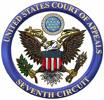Who Is a “Supervisor”? We Know One When We See One
Justice Potter Stewart famously eschewed a formal legal definition of pornography, and instead embraced the “I know it when I see it” test. Based on his opinion yesterday in United States v. Figueroa (No. 11-2594), Judge Posner seems to have a similar approach in mind for determining whether a drug trafficker is a “manager” or “supervisor.”
Under § 3B1.1 of the federal sentencing guidelines, a manager or supervisor of criminal activity receives a substantial sentence enhancement. An even larger enhancement is contemplated for some defendants who qualify as a “leader” or “organizer.” The guidelines suggest a seven-factor test for determining whether a defendant is a leader or organizer, but are silent on the meaning of manager and supervisor. However, in the Seventh Circuit and elsewhere, it has been common for courts also to look to the seven factors when making manager/supervisor determinations.
Writing for the panel in Figueroa, Judge Posner seemed to scoff at this approach:

